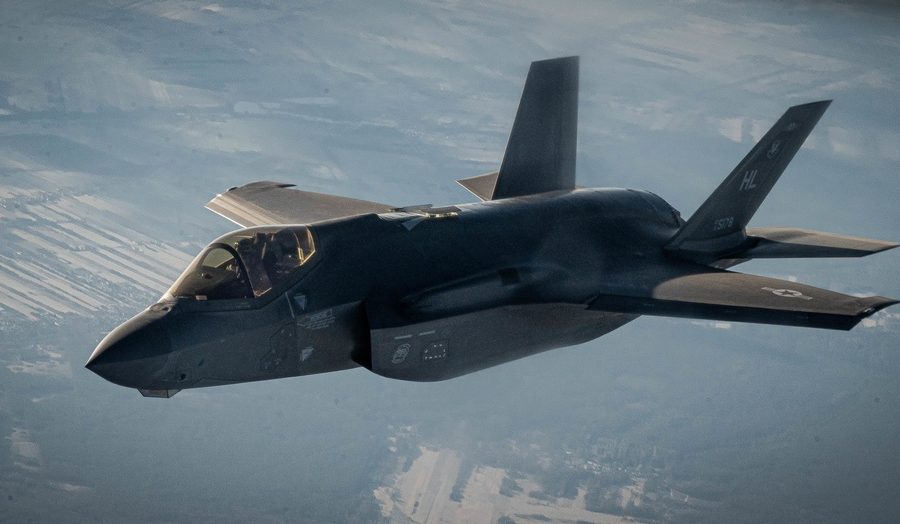F-35s in Eastern Europe have been performing some “elegant” intelligence, surveillance, and reconnaissance missions as part of the NATO response to Russia’s invasion of Ukraine, the head of U.S. European Command told lawmakers March 30—and he expects the fighter’s presence on the continent to expand dramatically by the end of the decade, exceeding earlier predictions.
Air Force Gen. Tod D. Wolters, who also serves as NATO’s Supreme Allied Commander in Europe, added to members of the House Armed Services Committee that getting more F-35s delivered to Europe, either as part of the U.S. Air Force or for other nations, is “critical.”
“They’ll deliver a tremendous improvement in our strategic ability, in indications and warnings, command and control, and mission command, as already demonstrated by U.S. F-35s that are contributing in the assure and deter mission at this time,” Wolters said.
In mid-February, just before the start of Russia’s attack on Ukraine, the U.S. deployed F-35s from Hill Air Force Base, Utah, to Spangdahlem Air Base, Germany, to enhance NATO’s defense posture. Those jets were later sent to Romania and Poland to bolster the eastern flank, arriving on Feb. 24.
At the time, U.S. Air Forces in Europe said six of the fifth-generation fighters were being deployed. More than a month later, Wolters told Congress that four are still being used in the region, to great effect.
“The U.S. F-35As, the four that we have right now, are in use, and they’ve been very effective doing some elegant ISR activities. And it just reveals to us how much greater capability we’re going to have once we get our full fleet on board,” Wolters said.
USAF has deployed more F-15s and F-16s to Eastern Europe during this crisis, but the performance of the F-35s is being closely watched by many—Sen. Jack Reed (D-R.I.), chair of the Senate Armed Services Committee, has said their success could go a long way in building his confidence in the program.
Wolters declined more discussion on the importance of the F-35’s capabilities in Europe to a classified setting on March 30, but it appears more and more likely that the fighter will play a key role in the continent’s future defense.
In June 2021, Wolters predicted during an Atlantic Council discussion that by 2030, there could be 450 F-35s in Europe. Since then, Finland and Germany have said they will buy the fighter as well, joining the U.S., Belgium, Denmark, Italy, the Netherlands, Norway, Poland, the U.K., and Switzerland as European nations and partners who have either started fielding the F-35 or have plans to do so.
The response to Russian aggression has helped to drive that demand, and Wolters told the HASC that he was upping his prediction.
“The disposition of the NATO nations with respect to the F-35 is dramatically growing,” Wolters said. “And our hope is, we have 100 on the continent right now, and we anticipate in 2030, growing to 550, and that’s a good fleet.”
MiG-29s Raised Again
While Wolters touted the capabilities that the F-35 has been able to offer during the recent crisis, he sounded less optimistic when it came to an issue that several representatives raised—the transfer of Soviet MiG-29s from Poland to Ukraine, using the U.S. as an intermediary.
The idea, put forward by Poland several weeks ago, was quickly shot down by the Pentagon, which said it didn’t consider the proposal “tenable.”
Since then, however, a bipartisan group of lawmakers has pushed for the transfer, which Ukraine has asked for.
The issue was raised once more by both Republicans and Democrats on the congressional panel, and Wolters reiterated that his best military advice has been for the U.S. not to send any jets to Ukraine.
“It goes back to the military mission effectiveness weighed against strategic miscalculation, to make sure you take into account the protection of the citizens of Ukraine, as well as the citizens on the periphery. So all those variables have to come into play,” Wolters said.

